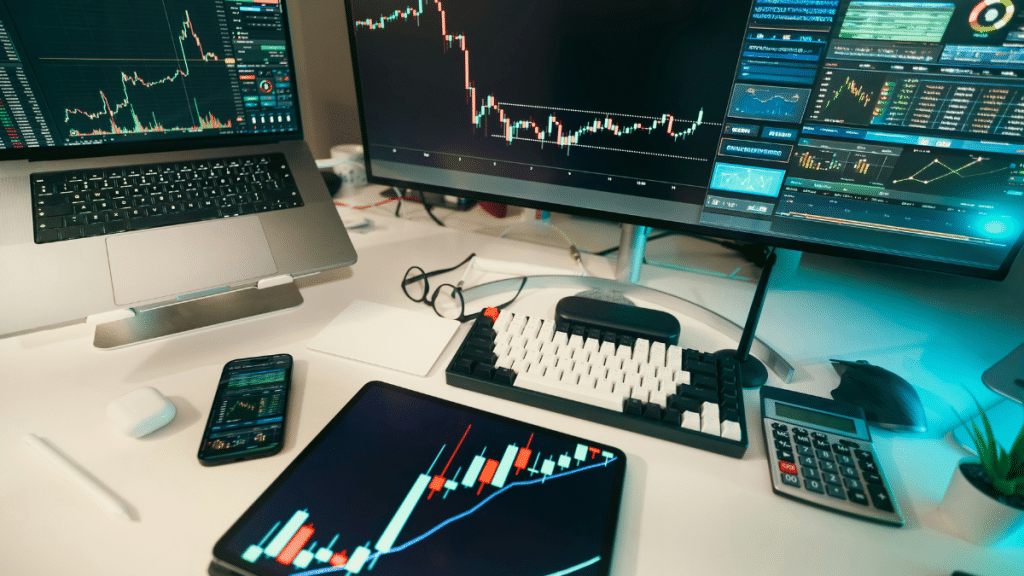Introduction to Day Trading Futures
Day trading futures is a high-stakes, fast-paced endeavor that attracts traders with the promise of significant profits. Unlike traditional stock trading, futures trading involves contracts that obligate the buyer to purchase, or the seller to sell, an asset at a predetermined future date and price. This type of trading requires not only a deep understanding of the market but also the ability to make quick decisions based on real-time data.
Understanding the Futures Market
The futures market is vast and covers a wide array of assets including commodities, currencies, indices, and even cryptocurrencies. Each contract represents a specific quantity of a given asset or commodity, with standardized terms set by the futures exchange.
Characteristics of Futures Contracts
1. Standardization: Each futures contract is standardized in terms of quantity, quality, and delivery time.
2. Leverage: Traders can control large positions with relatively small amounts of capital due to leverage.
3. Liquidity: The futures market is highly liquid, allowing for easy entry and exit from positions.
Types of Futures Markets
1. Commodity Futures: These include agricultural products like wheat, corn, and soybeans, as well as energy commodities such as oil and natural gas.
2. Financial Futures: This category encompasses currencies, interest rates, and stock indices.
3. Cryptocurrency Futures: An emerging market focusing on digital currencies like Bitcoin and Ethereum.
Key Strategies for Day Trading Futures
To succeed in day trading futures, traders need to adopt specific strategies tailored to their goals and risk tolerance.
Scalping
Scalping involves making dozens or even hundreds of trades in a single day to capture small price movements. This strategy requires quick decision-making and precise execution.
Trend Following
Trend following relies on identifying the general direction of the market and executing trades that align with this trend. Tools like moving averages can help traders determine trend direction.
Range Trading
In range trading, traders identify levels of support and resistance within which an asset’s price tends to fluctuate. Trades are executed near these levels in anticipation of price reversals.
Using Tools Like Bookmap
Advanced tools such as Bookmap provide real-time visualization of market depth data, allowing traders to see exactly where buyers and sellers are positioned in the market. This can offer a significant edge when executing trades.
Essential Considerations for Successful Futures Trading
Successful futures trading requires careful consideration of several key factors:
1. Market Volatility: Understanding the volatility of different markets helps traders select appropriate strategies.
2. Timing: Knowing when to enter or exit positions is crucial; this often depends on market-specific news or events.
3. Costs: Traders must account for commissions and fees that can impact overall profitability.
The Role of Technology in Day Trading
Technology has revolutionized day trading by providing traders with powerful tools and platforms for executing trades efficiently.
Automated Trading Systems
Automated trading systems execute trades based on pre-set criteria without human intervention, offering speed and precision advantages over manual trading.
Real-Time Data Analysis
Access to real-time data feeds allows traders to make informed decisions quickly. Platforms like Bookmap offer insights into market dynamics that are invaluable for day traders.
Risk Management Techniques
Effective risk management is at the core of successful day trading strategies.
1. Setting Stop-Loss Orders: These orders automatically close a position at a pre-determined price level to limit losses.
2. Position Sizing: Calculating the appropriate position size based on account size and risk tolerance helps protect against significant losses.
3. Diversification: Spreading investments across different markets reduces exposure to any single asset’s volatility.
Psychological Aspects of Day Trading
The psychological demands of day trading are significant; maintaining discipline under pressure is critical for success.
Emotional Control
Keeping emotions in check prevents impulsive decisions that could lead to substantial losses.
Confidence vs Overconfidence
While confidence is necessary for executing trades decisively, overconfidence can lead to taking excessive risks without proper analysis.
The Impact of Global Events on Futures Markets
Global events can have immediate and profound effects on futures markets; thus, staying informed is vital for traders.
1. Economic Indicators: Reports like GDP growth rates or unemployment figures can influence market sentiment.
2. Geopolitical Events: Political instability or conflicts can lead to sudden market shifts.
3. Natural Disasters: Events such as hurricanes can affect commodity supply chains and prices.
The Importance of Continuous Learning and Adaptation
The dynamic nature of futures markets necessitates ongoing education and adaptation by traders to remain competitive.
1. Keeping Abreast with Market Trends: Regularly updating knowledge about new financial products or regulatory changes is essential.
2. Learning from Mistakes: Analyzing past trades helps identify areas for improvement.
3. Networking with Other Traders: Engaging with fellow traders provides opportunities to share insights and strategies.
Conclusion: Navigating the Future of Futures Trading
Day trading futures presents both opportunities and challenges that require a blend of strategic thinking, technological resources, and emotional resilience. With tools like Bookmap providing unparalleled insights into market structures, traders are better equipped than ever before to navigate this complex landscape effectively.
As global markets continue to evolve rapidly amidst technological advancements and geopolitical shifts, those who commit themselves to continuous learning will likely find themselves well-positioned for success in the world of futures trading—a realm where fortunes can be made or lost in mere seconds yet offers boundless possibilities for those willing to take on its challenges head-on.

